The beauty of DSLRs for video is that
you’re not restricted to one lens
New cameras capable of capturing
professional-quality video are appearing at an ever increasing rate – barely a
month goes by without a new model being announced with the latest, greatest
features. The capabilities of each model can be high, but so can the price tag,
which makes it even more difficult to decide which camera to buy, and when.
What’s often overlooked is that capturing the image is only half of the
equation. Harnessing the light and focusing it on the camera sensor also plays
a huge part in the final quality of your results.
The lens that sits in front of your camera
can make a massive difference to the final quality of your footage – so much so
that it’s often wise to invest in glass first and technology second, especially
as a decent-quality lens could easily outlast many generations of camera.
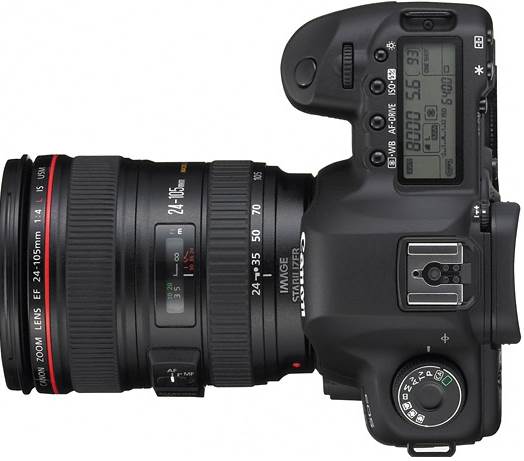
Smooth
operator: Canon’s 24-105mm lens include image stabilization, which makes for
smoother handheld shooting
A traditional camcorder tends to have
limited lens options. In many case, the lens it comes with is the one you’re
stuck with – it’s completely integrated and can’t be changed. Even if you can
physically change the lens on your camcorder, a dearth of choice may be another
sticking point, if lenses need to be specifically designed for a certain
camcorder model, the market for them is more limited, which makes it less
attractive to lens makers and more expensive for the public if you buy
additional camcorder specific lenses. There is also the risk that they won’t
work with any other model, so you’re effectively locked to that camcorder for
as long as you want to use lenses.
However, there’s one place where there’s
plenty of lens choice at affordable prices, and that’s the DSLR market. The
wide availability of many different lenses that work across a number of models
is attracting filmmakers to DSLRs lack other features that make life easier on
a hectic shoot, such as being able to record professional audio or shoot clips
longer than 12 or 30 minutes.
Manufacturers have clearly noticed the
growth in DSLR video, and they’ve produced fully fledged camcorders that
combine the best bits of DSLRs with a traditional video camera, retaining the
ability to use the existing lenses out there. Models such as Sony’s FS100 and
Canon’s C100 are camcorders through and through, but include the highlights of
a DSLR, such as a large sensor and interchangeable lens mount.
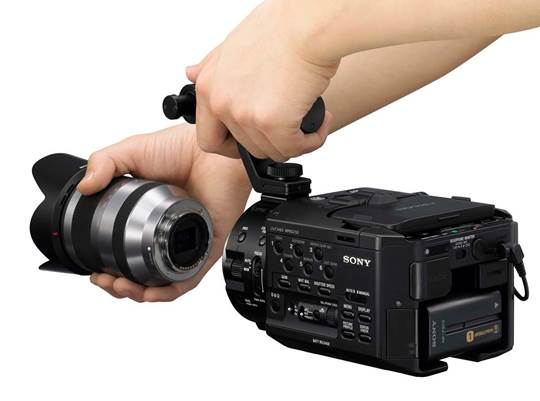
Swap
shop Sony’s NEX-FS100 is a camcorder with a large sensor and interchangeable
lenses
However, while DSLRs lenses can be used
widely on a number of different models from the same manufacturer, it’s not a
complete free-for-all. Canon, Sony and Nikon all have their own lens mounts,
and they’re all physically incompatible with one another. A secondary issue,
even if you can overcome the physical difference, is that some lens functions –
such as altering the aperture or autofocus – are performed electronically by
the camera, and these signals are also incompatible across different camera
systems. All is not, lost though. Whether one manufacturer’s lenses can be used
on another’s camera initially comes down to what’s known as flange focal distance.
This is the distance between the back of the lens and the camera’s sensor.
Different cameras have different flange distances, which mean that some lenses
can be adapted to work with another model.
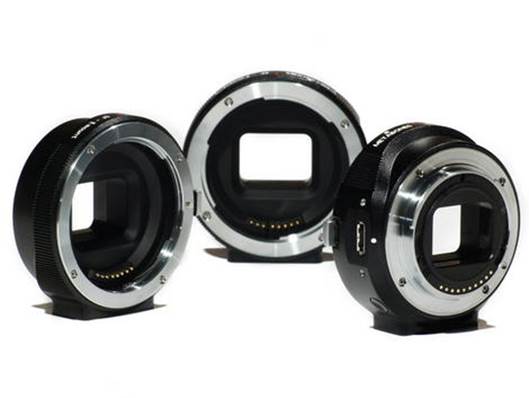
Ring
of power: Metabones’ EF adaptor lets you use Canon EF lenses on Sony’s E-mount
cameras such as the FS100
Lenses from cameras with a large flange
distance can generally be adapted to be used on cameras with a short flange
distance, provided that the difference between the two measurements is
sufficient to accommodate an adaptor ring. An adaptor ring has a mount that
matches the lens on one side and another mount that matches the camera on the
other. It also needs to reproduce the flange distance for which the lens is
designed in order that the lens can focus correctly on the new camera.
One element that used to dictate a large
flange distance was the mirror in DSLRs. New mirror less cameras tend to have a
much shorter flange distance, which means lenses designed for DSLRs with
mirrors can be adapted to be used on mirror less models.
Physically mounting the lens only solves
half problem, however. If you want the camera to be able to control many
aspects of the lens electronically, the adaptor needs to have some logic built
in to translate the signals from the camera into ones that the lens can
understand. Non-electronic lenses, with physical adjustments for aperture and
focus, however, just require a basic adaptor. One example of a successful lens
adaptor is the Meta-bones Canon EF Lens to Sony NEX Smart Adapter ($592 inc
VAT), which will let you use many of Canon’s EF range of lenses on Sony’s E
mount cameras, such as the FS100 or FS700.
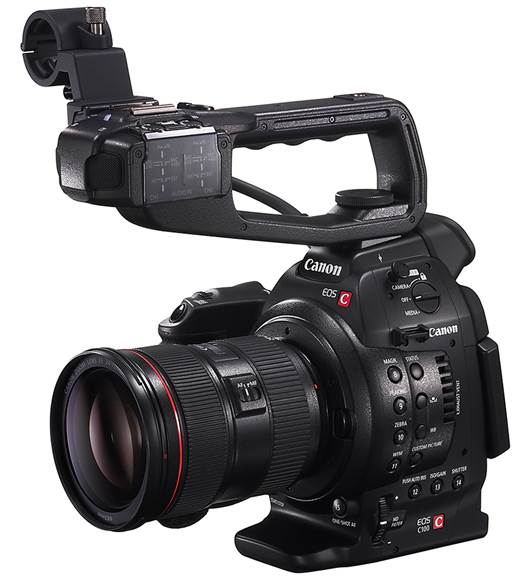
Best
of both worlds: Canon’s C100 combines the best aspects of a DSLR and camcorder,
and can use any of Canon’s EF lenses directly
Another issue you need to consider when
using different lenses across camera bodies is crop factor. Lenses are referred
to by their focal length, which tells you how much of the image will be in the
shot. A short focal length such as 20mm gives a wide angle that includes a lot
of the scene. A long focal length such as 200mm fives an extreme close up.
However, these focal lengths are derived from a full-frame 35mm sensor.
Use the same lens on a smaller sensor and
the resulting image will be magnified as if you’d cropped a central part of the
image in Photoshop. Canon’s 5D or Nikon’s D800 are full-frame cameras, while
Canon’s 7D or Nikon’s D7100 have smaller APS-S size sensors.
The difference in size between a full-frame
sensor and an APS-C one results in a magnification of 1.6 – also called the
crop factor. So if you use 24mm lens on an APS-C camera, it goes from being a
reasonably wide-angle lens to a much closer 38mm. put a 200mm zoom on an APS-C
sensor and it will zoom even further going to 320mm instead. The crop factor is
generally a benefit when it comes to zooms, as longer zooms cost more, but it
can be a pain if you’re trying to get a wide angle shot, since you need an even
shorter focal length to get everything in.
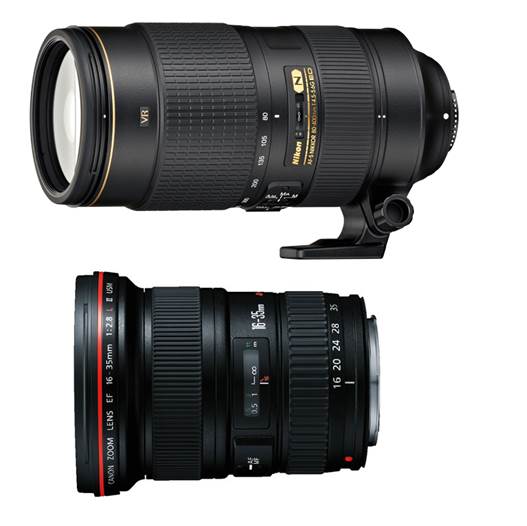
Mounting
concern: Nikon and Canon lenses use different mounts, so they can’t be used on
each other’s camera bodies
Another aspect that can beneficial to video
production is image stabilization. This was originally designed for stills
photography to eliminate blur in handheld shots. However, it can be equally
useful for video use.
Image stabilization works by using a motor
to shift the lens ever so slightly to smooth out the movement. A gyroscope
measures the motion and the motor then aims to counteract it. When enabled
during handheld shots, it won’t keep your shooting rock solid, but it will iron
out minor shakers and results in smooth motion instead, which is more pleasant
to watch.
The downsides of images stabilization are
that it requires additional power to keep moving the lens, resulting in
increased battery drain, and it can be noisy enough to be picked up by the
camera’s microphone. If you’re using a tripod, it’s also best to turn it off as
it can sometimes behave erratically and introduce movement where there
shouldn’t be any at all.
Investing in the right lenses is often more
cost efficient than buying a new camera every 12 months. Once you settle on a
lens system, you can replace the body less frequently and still use all your
existing glass, which means more money to spend on other aspects of your video
production.